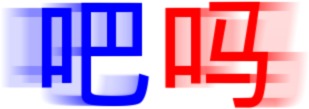The difference between Mandarin 吗 and 吧
 In Mandarin Chinese, the particles 吗 (ma) and 吧 (ba) both have a mouth radical (口 kǒu) and both can turn a statement into a question when added to the end.
In Mandarin Chinese, the particles 吗 (ma) and 吧 (ba) both have a mouth radical (口 kǒu) and both can turn a statement into a question when added to the end.
The different uses of these particles and what kind of questions they mark can be a source of confusion for beginners.
吧 (ba)
This particle has two main uses:
- 给我吧 (Gěi wǒ ba): Could you give that to me?
- 慢点儿吧 (Màn diǎnr ba): Could you slow down a bit?
- 咱们吃饭吧 (Zánmen) chīfàn ba: Let’s eat
- 他是小李吧? (Tā shì Xiǎolǐ ba?): He’s Xiaoli, right?
- 这里是中文系吧? (Zhèlǐ shì zhōngwénxì ba?): This is the Chinese faculty, isn’t it?
- 你喜欢吃菠菜吧? (Nǐ xǐhuan chī bōcài ba?): You like spinach, don’t you?
吗 (ma)
This particle is used to mark direct ‘yes / no’ questions:
- 他是小李吗? (Tā shì Xiǎolǐ ma?): Is he Xiaoli?
- 这里是中文系吗? (Zhèlǐ shì zhōngwénxì ma?): Is this the Chinese faculty?
- 你喜欢吃菠菜吗? (Nǐ xǐhuan chī bōcài ma?): Do you like spinach?
The difference between the two is that 吧 is attached to statements that the speaker is unsure of and wants to confirm with the listener, whilst 吗 is attached to statements to turn them into direct questions.
A quick summary
When used to form questions, the functions of 吧 and 吗 are:
- 吧: tag questions for confirming things
- 吗: direct ‘yes / no’ questions
